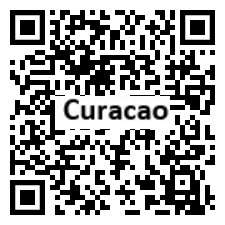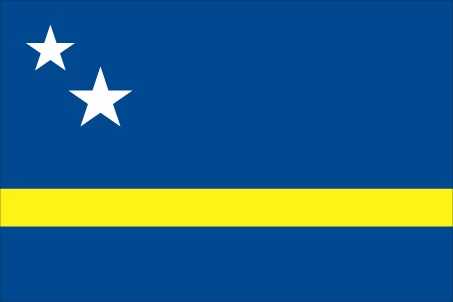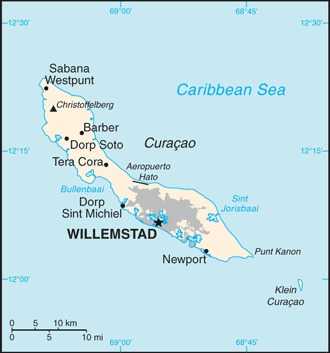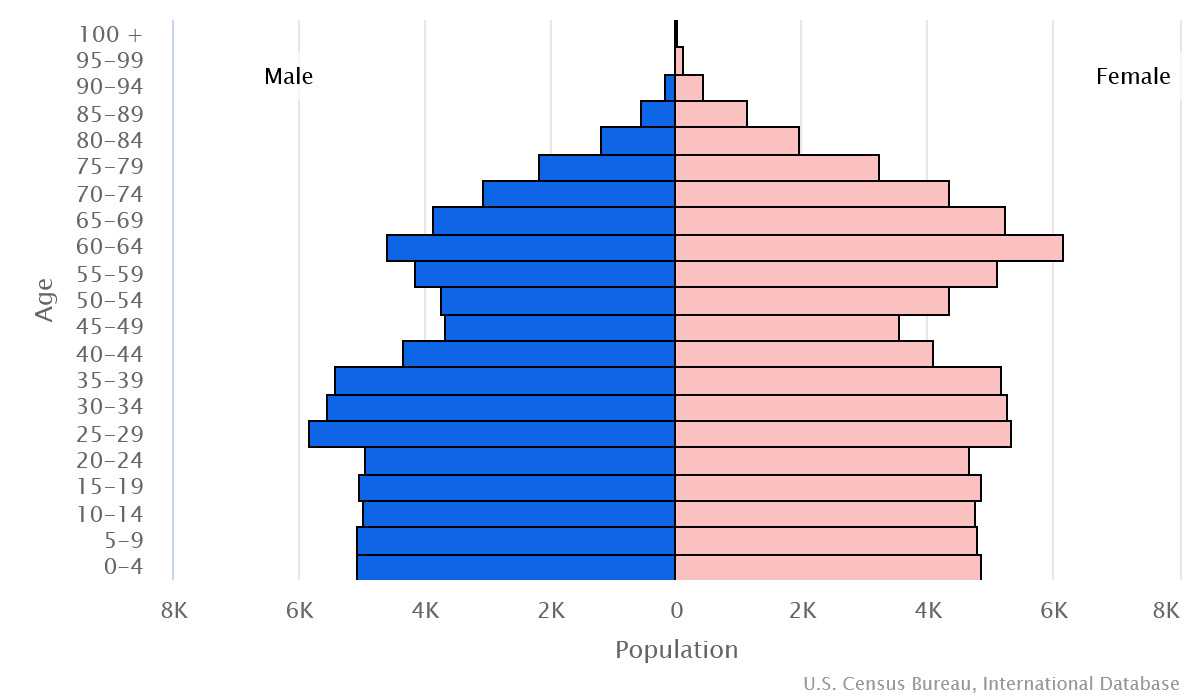Introduction
Background
The original Arawak Indian settlers who arrived on the island from South America in about A.D. 1000 were largely enslaved by the Spanish early in the 16th century. The Dutch seized Curacao from the Spanish in 1634. Curacao and several other Dutch Caribbean possessions were reorganized as the Netherlands Antilles in 1954. In referenda in 2005 and 2009, the citizens of Curacao voted to become a self-governing country within the Kingdom of the Netherlands.
Geography
Area
total : 444 sq km
land: 444 sq km
water: 0 sq km
Climate
tropical marine climate, ameliorated by northeast trade winds, results in mild temperatures; semiarid with average rainfall of 60 cm/year
Natural resources
calcium phosphates, protected harbors, hot springs
People and Society
Population
total: 153,289
Ethnic groups
Curacaoan 75.4%, Dutch 6%, Dominican 3.6%, Colombian 3%, Bonairean, Sint Eustatian, Saban 1.5%, Haitian 1.2%, Surinamese 1.2%, Venezuelan 1.1%, Aruban 1.1%, other 5%, unspecified 0.9% (2011 est.)
Languages
Papiamento (official) (a creole language that is a mixture of Portuguese, Spanish, Dutch, English, and, to a lesser extent, French, as well as elements of African languages and the language of the Arawak) 80%, Dutch (official) 8.8%, Spanish 5.6%, English (official) 3.1%, other 2.3%, unspecified 0.3% (2011 est.)
Religions
Roman Catholic 72.8%, Pentecostal 6.6%, Protestant 3.2%, Adventist 3%, Jehovah's Witness 2%, Evangelical 1.9%, other 3.8%, none 6%, unspecified 0.6% (2011 est.)
Population growth rate
0.28% (2024 est.)
Government
Government type
parliamentary democracy
Capital
name: Willemstad
Executive branch
chief of state: King WILLEM-ALEXANDER of the Netherlands (since 30 April 2013); represented by Governor Lucille A. GEORGE-WOUT (since 4 November 2013)
head of government: Prime Minister Gilmar PISAS (since 14 June 2021)
Legislative branch
description: unicameral Parliament of Curacao (21 seats; members directly elected by party-list proportional representation vote to serve 4-year terms)
Economy
Economic overview
high-income island economy; developed infrastructure; tourism and financial services-based economy; investing in information technology incentives; oil refineries service Venezuela and China; unique COVID-19 stimulus support applied to government debts rather than household support
Real GDP (purchasing power parity)
$4.137 billion (2022 est.)
$3.834 billion (2021 est.)
$3.68 billion (2020 est.)
Real GDP per capita
$27,600 (2022 est.)
$25,200 (2021 est.)
$23,700 (2020 est.)
Agricultural products
aloe, sorghum, peanuts, vegetables, tropical fruit
Industries
tourism, petroleum refining, petroleum transshipment, light manufacturing, financial and business services
Exports
$2.049 billion (2022 est.)
$1.373 billion (2021 est.)
$1.014 billion (2020 est.)
Exports - partners
US 17%, Costa Rica 16%, India 9%, Netherlands 7%, Guatemala 7% (2022)
Exports - commodities
refined petroleum, petroleum coke, fish, coal tar oil, scrap iron (2022)
Imports
$2.904 billion (2022 est.)
$1.919 billion (2021 est.)
$1.709 billion (2020 est.)
Imports - partners
US 35%, Netherlands 22%, China 7%, Ecuador 5%, Philippines 3% (2022)
Imports - commodities
refined petroleum, cars, garments, integrated circuits, packaged medicine (2022)
Exchange rates
Netherlands Antillean guilders (ANG) per US dollar -
Page last updated: Wednesday, July 24, 2024




